The CRCWSC brings together many disciplines, world-renowned subject matter experts, and industry thought leaders to revolutionise urban water management, in Australia and overseas.
We can apply our work to global cities with a wide variety of climatic conditions, challenges and institutional settings.
We are working on many international water sensitive cities transformations, including in China, India and Singapore. We are working with the Asian Development Bank (as a knowledge partner) and with the World Bank (to support its Water Scarce Cities Program), for example. We also have many international Participants, including UNESCO, the National University of Singapore, the Kunshan Bureau of Planning (China), and the Technical University of Denmark.





Find out more about what we’ve been doing overseas.
You may find our research and case studies from both Australia and overseas useful to your own context, or speak to us about how we may support your project objectives.
We welcome your interest in our work and how it might influence your own.
Our work in China started with a single project in 2012, embedding nature-based technology designed to improve water quality into the landscape architecture of the Opera House and Cultural Plaza in the city of Kunshan, Jiangsu. We have now completed over 30 projects. And our collaboration with Kunshan is entering a new phase—upscaling technologies and integrating them into broader urban frameworks.
Contact
Jianbin Wang
Engagement Manager–China
We helped to create the award
winning sponge city of Kunshan
We worked with our partners to help solve some complex urban water problems in the City of Kunshan (in China)—degraded waterways, catchment pollution, poor water circulation, poor drainage and frequent flooding.
We used our innovative social-technical approach, which introduces technical solutions, and fosters collaboration and integrated governance among the many stakeholders involved in city planning, infrastructure delivery and water environment protection.
We used nature-based solutions to embed four elements—water, forest, food and culture—into open spaces, along road and rail transport corridors, conserving strategic natural features and creating an urban mosaic of ecological landscapes for framing and guiding the city’s development.
The ecosystem services embedded into the cityscape have improved water quality, enhanced landscape connectivity, created biodiversity, introduced food production, and influenced the urban microclimate, allowing the city to repair itself. This city-wide strategy reduces pollution into regional waterways, and mitigates flood risks for downstream cities.
Kunshan is now recognised as one of China’s leading sponge cities with a unique blend of structural and non-structure initiatives, strengthening its resilience to the many challenges of urban water security and urban liveability in a developing city.

Project stats
Location:
Kunshan, Jiangsu, China
Participants:
E2DesignLab
Kunshan City Construction, Investment and Development Company
Kunshan City Government
Kunshan Bureau of Planning
Kunshan Bureau of Housing and Urban-Rural Development
Kunshan Bureau of Garden and Landscape
Kunshan Hi-Tech Zone
Kunshan Yangcheng Lake Hi Tech Park
Realm Studios
Water Technology
Inspire Design
Coolth.Inc
Monash Art Design and Architecture
Phoria
Permeate Partners
Enviss
Liveability Victoria International
Topics:
Ecosystem health
Flood resilience
Stormwater treatment
Additional information:
City of Kunshan to be China’s first CRC Incubator City for Water Sensitive Design and Technology
We’re helping design the Jiangsu–Victoria
Sponge City Innovation Park
This 10 hectare sponge city Innovation Park will exhibit cutting edge water sensitive infrastructure and technology, with facilities for validating emerging sponge city technologies and products.
The CRCWSC and our partners will lead the park’s development and master planning, and undertake infrastructure, landscape and building concept designs that will showcase water-wise innovation at building and public open space scale.
The park will link with Kunshan’s Sponge City Performance Assessment and Testing Facilities; the two will serve as the research, demonstration and technology validation facility for local and international innovation for broader application in Kunshan and across China.
These are some of the innovative features of the park:
- The recirculation wetland manages water quality and keeps water moving in the adjoining polder canal.
- The riparian ecozone establishes the exemplar template of how a riparian zone can be restored. It shows the diversity of ecological transition from aquatic, deep marsh and shallow marsh to terrestrial plants.
- The central median biofilter shows how the streetscape will capture road runoff for stormwater attenuation and pollution reduction.
- The nutrient recovery glass house will produce nursery plants irrigated using nutrient-rich recycled water from the wastewater treatment facility.
- The structure soil tree pit will provide sufficient quality soil volume for healthy tree roots and growth in an urban environment, as well as treat stormwater.
- The swamp forest wetland will add a vertical dimension to the traditional stormwater wetland and provide visual screening for the overhead power lines.
- Together, the sub-surface wetland and surface wetland will form an ecological landscape around the administration building precinct. It will also help to clean up the canal, which include black and odour problems.
Project stats
Location:
Kunshan, Jiangsu, China
Participants:
Jiangsu Department of Housing and Urban–Rural Development
Kunshan Municipal People’s Government
Kunshan Bureau of Housing and Urban–Rural Development
Kunshan Hi-Tech Zone
Liveability Victoria International
Realm Studios
E2DesignLab
BKK Architects
Topics:
Alternative water supplies
Design and implementation
Water sensitive parks and open spaces
Additional information:
Fly through our vision for the Jiangsu–Victoria Sponge City Innovation Park
CRC Victoria–Jiangsu cooperative partnership
Our Jiangsu—Kunshan rated national model for sponge city planning
We assessed Hotan’s water security vulnerability
This vision is a great opportunity to develop Hotan into a model Chinese Sponge City for the desert environment. This project also demonstrated the concept of a sponge city goes beyond stormwater management.
We conducted a rapid assessment of Hotan’s water security vulnerability, and the critical inadequacies of the city’s existing water services. We identified opportunities to position and transition the city into a water sensitive city, by incorporating water ecological landscapes into the city’s urban design. We developed a vision and transition strategy that ensures Hotan has a sustainable water supply, is resilient to climate change, and promotes greater liveability and ecological civilisation outcomes.
Project stats
Location:
Hotan, Xinjiang, China
Participants:
Asian Development Bank
Additional information:
CRCWSC boosts international awareness of water sensitive cities
Our work in India began in 2017, collaborating with the Australian Water Partnership (AWP) and the Australian Government Department of Foreign Affairs and Trade (DFAT), to help to enhance sustainable water management in the Indo-Pacific region. As well as helping implement best practice water management, our hope our work in India will stimulate future urban water management opportunities for Australian businesses in India and build capability among local partners.
Contact
Malcolm Eadie
Commercial Manager
We are helping design a new city in India
The CRCWSC is working with the State of Andhra Pradesh in India, to incorporate Australia’s world leading water sensitive practices into the state’s new capital city (to be known as Amaravati). We are helping design a city the right way from the outset, with all the features that are crucial to liveability, resilience and sustainability.
The CRCWSC’s role includes:
- designing the stormwater and water management for the Government precinct of the new city
- establishing demonstration sites in the neighbouring city of Vijayawada (40 minutes from Amaravati), to move that city towards its own sustainable urban water management.
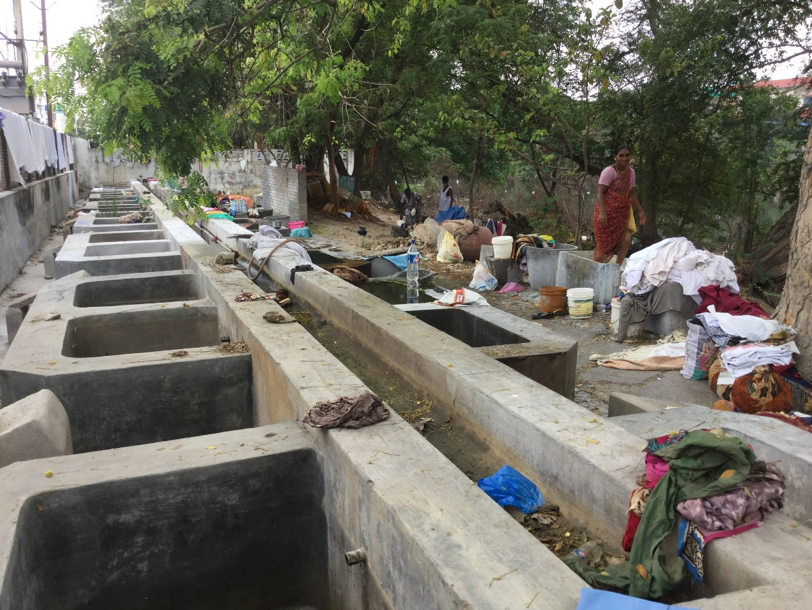
Project stats
Location:
Amaravati and Vijayawada, Andhra Pradesh, India
Participants:
Andhra Pradesh Department of Municipal Administration and Urban Development
Capital Region Development Authority (Andhra Pradesh)
Foster + Partners
Centre for Liveable Cities
Topics:
Ecosystem health
Urban waterways
Wastewater management and recycling
Additional information:
CRCWSC to work on ‘once in a lifetime’ project to design new Indian capital city
We are involved in a range of activities in South-east Asia and the Pacific regions. These activities range from testing our Water Sensitive Cities Index in a variety of locations and settings, to helping improve health and wellbeing outcomes in developing countries, to building new relationships with stakeholders.
Contact
Kerrie Burge
International Engagement Manager—Asia Pacific
We are part of the RISE project in Indonesia and Fiji
Revitalising Informal Settlements and their Environments (RISE) project is examining the interactions between health, the environment, and water and sanitation in informal settlements in developing countries. Led by Monash Sustainable Development Institute, the project is currently adapting and applying water sensitive principles and practices in two locations—Makassar (Indonesia) and Suva (Fiji).
We advise RISE on community engagement and nature based structural engineering solutions for sanitation and clean water. Working with communities, governments, local leaders and partner institutions, RISE is co-designing location-specific solutions that integrate green infrastructure (such as constructed wetlands) to strengthen the whole-of-life water and sanitation cycle.
The project is jointly funded by Wellcome Trust (UK) and the Asian Development Bank.

Project stats
Location:
Makassar, Indonesia and Suva, Fiji
Participants:
Wellcome Trust
Asian Development Bank
Monash Sustainable Development Institute
Monash University
Stanford University
Emory University
University of Melbourne
University of Cambridge
Fiji National University
Hasanuddin University
University of the South Pacific
United Nations University
Melbourne Water
South East Water
Oxfam
WaterAid
Wellcome Trust Sanger Institute
Topics:
Community engagement
Flood resilience
Green infrastructure
Additional information:
RISE starts 2018 with new website and annual activity report
Training encourages integrated water management in Fiji
RISE breaks ground in Makassar
We’ve applied the Water Sensitive Cities
Index to four countries in the region
We applied our Water Sensitive Cities Index tool to diagnose the strategic urban water needs for cities in Indonesia, Fiji, Myanmar and China. For Suva (Fiji) and Mandalay (Myanmar), for example, we leveraged contemporary, global research in urban water innovation to identify initiatives that complement existing practices and infrastructure projects. Our approach optimises the way forward for each community, and improves the health and livelihoods of their citizens—especially the most vulnerable.
Project stats
Location:
Bogor, Indonesia; Suva, Fiji; Mandalay, Myanmar; Kunshan, China
Topics:
Benchmarking and decision support
Governance and policy
Leadership and influence
We are building relationships with stakeholders in New Zealand
Our work in New Zealand began in in 2018, collaborating with the Sustainably Society through a workshop to explore collaborative water management practices and understanding culturally sensitive water practices. The workshop focused on fostering the relationships between providers, governments and the community that are necessary for achieving a shared vision among diverse stakeholders. It highlighted a gap in our current approach: How do we ensure Indigenous knowledge, values and stories are embedded in the way we perceive and interact with our water?
Along with workshop participants, we explored what culturally sensitive practice would look like:
- Urban water management is co-defined, co-developed and co-managed with Indigenous partners.
- Indigenous knowledge, stories and values are embedded in water planning and decision making.
- Indigenous voices and representatives are involved in decision making at all levels.
- Water design solutions will be site-specific and reflect the cultural and environmental context.
Project stats
Location:
Wellington, New Zealand
Participants:
The Sustainability Society
Topics:
Benchmarking and decision support
Governance and policy
Leadership and influence
Additional information:
Exploring ways to ensure water sensitive practices are also culturally sensitive
We’re partnering with the World Bank to improve urban water management in developing countries.
For example, we are providing advice on managing groundwater resources (particularly protecting and artificially recharging these resources) to countries in Africa and the Middle East. We have worked with representatives from Lebanon, Jordon, Iraq, Algeria, Ethiopia, Ghana and South Africa. We also participated in a Lebanese Parliamentary Seminar on water security held in Beirut.
We also helped prepare and deliver a study tour to Brazil, as part of the Bank’s Integrated Urban Water Management (IUWM) South-to-South Knowledge Exchange. This tour showcased operational experiences in Teresina and Sao Paulo.
Contact
Ben Furmage
Chief Operating and Finance Officer
Tony Wong speaks at South African conference
Our CEO, Professor Tony Wong, was a keynote speaker at the Water Institute of Southern Africa (WISA) conference on 24–27 June in Cape Town. Tony presented his keynote address ‘Integrated water management, water sensitive cities and liveability’ on the conference opening day. He looked at urban water challenges in Australia during the period of the Millennium Drought, and the floods that broke that drought, and how many Australian cities have prepared to strengthen the resilience of Australian cities to future climatic challenges. He reflected on some of the lessons from that period and developed some key messages that could guide…
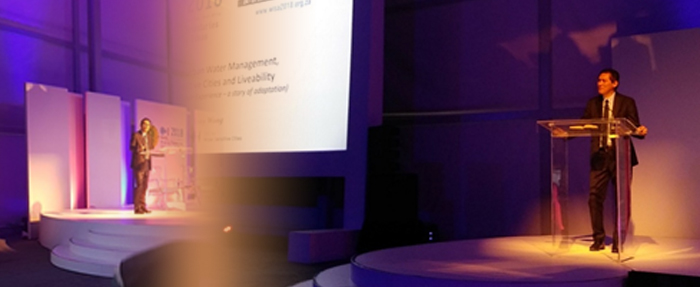
Get news in your inbox
Access Water Sensitive Cities resources
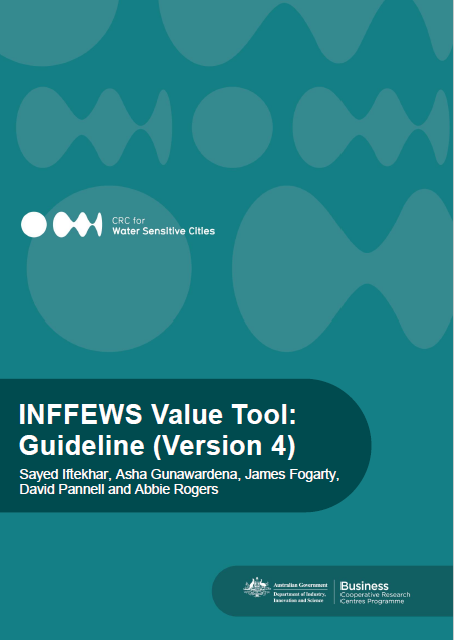
INFFEWS Value tool: Guideline (Version 4)
The purpose of this document is to provide a readily accessible guideline on how to adjust existing non-market values for application in a new context. It also provides step-by-step rules on how to use the CRCWSC Value tool. This guideline…
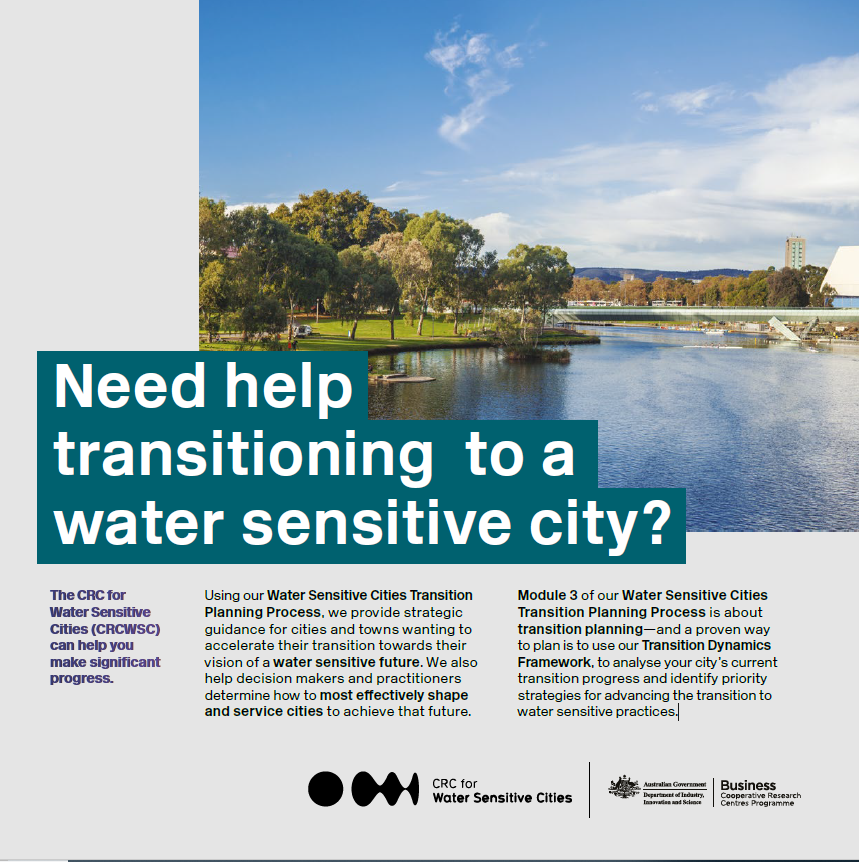
Need help transitioning to a water sensitive city?
Do you need help transitioning…
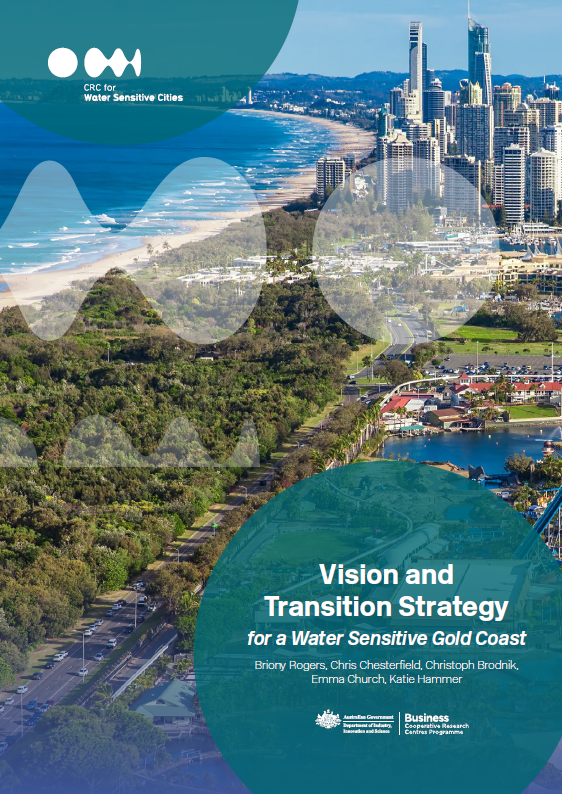
Vision and Transition Strategy for a Water Sensitive Gold Coast
The City of Gold Coast…
